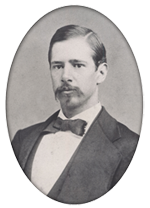By Jim Hopkins
Boulevard Publisher
When Brown-Forman stockholders gathered in July at the whiskey giant’s Georgian Revival headquarters west of downtown, the outcome of a crucial vote — re-electing 12 directors to the governing board — was anything but a surprise.
This has been the founding Brown family’s company for nearly 150 years. Six of the directors were Browns, including board Chairman George Garvin Brown IV — a great-great grandson of the founder — and the rest were unquestionably family loyalists.
Stockholders outside the family knew what Brown-Forman has disclosed for years in an annual statement soliciting their votes: 13 individual Browns and family groups hold 67% of all the voting shares in “a variety of family trusts and entities, with multiple family members often sharing voting control and investment power.”
Much less has been known about the scope of those entities, leaving more than 5,600 other stockholders in the dark about exactly how the Browns divvy up nearly $6 billion in shares among a core group of relatives.

But now, documents filed by the Browns with the Securities and Exchange Commission detail how complex their ownership has grown since the pharmaceuticals salesman George Garvin Brown founded the company in 1870. They shed light on how the Browns have deployed extensive trust accounts, business partnerships, and other legal vehicles to pass down Brown-Forman stock through six generations. That’s an exceptional legacy in American business: Just 12% of family-owned companies survive into the third generation, and a slim 3% survive to the fourth and beyond.
The documents also point to a network of boutique consulting firms and other white-shoe professionals advising the city’s wealthiest families on everything from investments to taxes and charitable giving, hiring housekeepers and gardeners — even organizing vacation travel and family gatherings. Paid tens of thousands of dollars a year in fees, the firms are the backbone of a larger, multibillion-dollar economy serving the area’s uber-rich.

The documents were filed over the past 18 months by Continue reading “Documents reveal a legal latticework shielding the Brown family’s $6 billion whiskey fortune”


 This leads me to another footnote, of sorts — one that appeared on a story today at
This leads me to another footnote, of sorts — one that appeared on a story today at 





 But he also likes other charities — especially the zoo, according to the most recent IRS tax returns for his
But he also likes other charities — especially the zoo, according to the most recent IRS tax returns for his 

 The 142-seat movie theater is part of the newly renovated museum’s expansion. It’s equipped with state-of-the-art technology, including 16-mm, 35-mm and DCI-compliant 4K digital projection systems.
The 142-seat movie theater is part of the newly renovated museum’s expansion. It’s equipped with state-of-the-art technology, including 16-mm, 35-mm and DCI-compliant 4K digital projection systems.